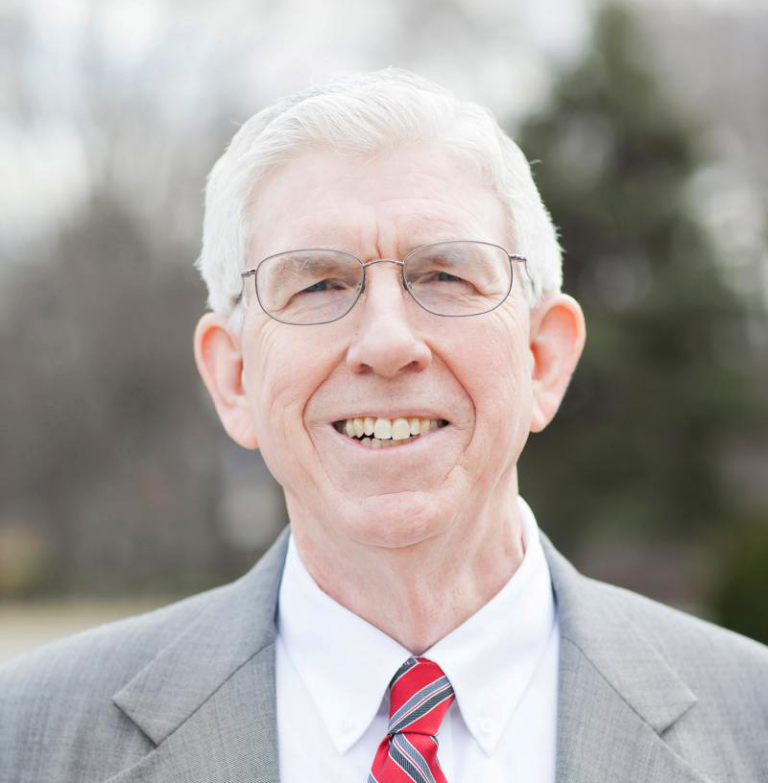Acts 15: 1–35
Acts 15 is a pivotal narrative in Luke’s history of the apostolic church. What already had been given by divine revelation (Galatians 1:11, 12) comes to a doctrinal crisis through an opposition party. In beautifully concise language, replete with important implications, Luke recorded this crisis that established, under the controlling agency of the Holy Spirit, a doctrinal controversy that defined the central truth of the new covenant. One may see the repercussions of this controversy throughout the New Testament, but particularly in Romans, Galatians, Ephesians, Philippians, and Colossians. All of Western society, indeed the whole world, reflects the pivotal nature of this chapter. This chapter also captures important elements of the progressive nature of revelation and capsulizes why the apostolic period gives the final revelatory prophetic word.
I. Ceremonial Law and the Gospel of grace (Verses 1–5).
A. Jews came to the mainly Greek church in Antioch and taught that circumcision was necessary if they were to be saved.
Doubtless, they argued from Genesis 17:9–14 that all the people of God, even the foreigners who came into the community of the people of God, must carry the sign of the covenant—circumcision. Faith was fine, but the Messiah could not be the savior of the Gentiles if they refused to receive circumcision. “This is my covenant which you shall keep,” so God told Abraham (Genesis 17:10).
B. Paul and Barnabas opposed this teaching and debated them vigorously.
-
- Since his conversion, Paul had worked through the Old Testament corpus seeing the entirety as an expression of covenantal and redemptive truth, filled with types and ceremonies to be eliminated when it all culminated in Christ.
- All of these were completely fulfilled and had no further usefulness for identifying either the Messiah or the people of God.
- He and Barnabas had preached to, reasoned with, and seen conversions among both Jews and Gentiles. The single avenue for participation in all the blessings of the Messiah’s work was faith—faith alone in Christ alone with nothing outside of Christ added.
- Now, these Jewish ceremonialists were arguing—after the people in Antioch had believed, had organized as a church, were the first believers called “Christians,” had sent Paul and Barnabas on mission to the Gentiles—that they still were missing the key identification of the covenantal people, circumcision.
- This was absurd phenomenologically and positively erroneous—nay, dangerous to the point of anathema—in the doctrine of salvation. “I testify again to every man who receives circumcision, that he is under obligation to keep the whole Law. You have been severed from Christ, you who are seeking to be justified by law; you have fallen from grace” (Galatians 5:3, 4).
- No wonder they had “great dissension and debate.” Those who are squeamish about doctrinal controversy should consider earnestly what is at stake in either affirming or denying the particular doctrines that often bring about dissension in doctrinal dialogue. To choose a façade of peace over the substance of truth creates a deceitful unity contrary to God’s glory and the safety of souls.
C. The Antiochian church decided to send Paul and Barnabas to Jerusalem to take up this issue with the apostles and elders there.
Evidently the church believed that Paul and Barnabas had made their point clearly. Since these brethren had come from Judea, the Christians in Antioch wanted the apostles and elders in Jerusalem to hear this argument. Had the Antiochian believers embraced the gospel message in vain? Would the Jerusalem church say this was purely adiaphora-an issue of no consequence? Would they take a positive stand on the intrinsic nature of the gospel and shut off any attempt to make this mongrelization of covenants standard teaching?
D. On the journey they shared the results of their first missionary journey with churches composed mainly of non-Gentiles (3).
These narratives of gospel success caused great rejoicing. The fact that they described “in detail the conversion of the Gentiles” showed that preaching brought faith and faith brought all the blessings of salvation. These reports found theological expression in Romans 10:5–13. “For there is no distinction between Jew and Greek, for the same Lord over all is rich to all who call upon him. For ‘whoever calls on the name of the Lord shall be saved.’”
E. When they arrived in Jerusalem, they reported on the missionary journey and pointed particularly to the blessings that God had poured out through their ministry.
This ministry was, in particular, one of preaching and a calling for repentance and faith. Never did they impose any part of the ceremonial law on their Gentile hearers.
F. The believing sect of the Pharisees again set forth the necessity of circumcision.
This set the stage for a lengthy debate and a full presentation of arguments from both sides. The claims of the Pharisees who had united with the believers in Jesus as Messiah saw this requirement of circumcision as an absolute. One could not violate the covenant made with Abraham and be a true follower of the God of Israel: “It is necessary to circumcise them and to direct them to observe the Law of Moses” (6).
II. A lengthy debate led to doctrinal extrapolations from Peter, Paul, Barnabas, and James (Verses 6–21).
A. A probable line of thought in the debate
-
- The Judaistic element probably argued from at least two standpoints.
-
-
- Circumcision was established with Abraham and was to be the mark of God’s people from Genesis 17 in perpetuity. The covenant in the flesh of males was given as an “everlasting covenant” (Genesis 17:13). If the sign was not received “that person shall be cut off from his people; he has broken my covenant” (Genesis 17:14). If the foreskin is not “cut off,” then the person is to be “cut off.”
- This was reiterated under the giving of the law to Moses. “And on the eighth day the flesh of his foreskin shall be circumcised” (Leviticus 12:3).
-
2. The Pauline party probably argued from at least three standpoints.
-
-
- Abraham’s justification preceded his circumcision and was granted on the basis of his belief in the promise (Genesis 15:6; Galatians 3:6–9).
- Circumcision is fulfilled in regeneration, which is the circumcision of the heart and the center of the promised new covenant. This became a major point in the writings of Paul and was a pivotal point of his whole ministry. Read his arguments in Romans 2:25 – 29; 4:11, 12; 2 Corinthians 1:20; Colossians 2:11–15; Philippians 3:1–5.
- Demonstration of new covenant power accompanied their preaching of the gospel to the Gentiles. See Paul’s testimony to this in 2 Corinthians 3:2–6. This was to be expected in the promise of Ezekiel 36:24–27 cf. with Galatians 6:13–16.
-
B. Peter draws a theological conclusion.
-
- God chose Peter to be the first one that would preach the gospel to the Gentiles with the divine intent that they would believe. God first of all showed Peter that the ceremonial law is a dead letter (Acts 10:28).
- Through Peter’s preaching these Gentiles believed and manifested the presence of the Holy Spirit in the same way the Jews had at Pentecost (Acts 10:44–46). First, it is clear that God gave them the new covenant promise of a new heart and then gave visible evidence at once that they had received the Holy Spirit. Peter saw that they now operated in the realm of the Spirit and ceremonial distinctions had been obliterated, just as Jesus had told the woman in Samaria (John 4:21–24).
- In the hearing and believing of the gospel, God had made no distinction between Jew and Gentile. Even as Paul had claimed that there was “no distinction” between Jew and Gentile in their sinfulness (Romans 3:22, 23), so there was “no distinction” in the way God cleansed the hearts of Jew and Gentile through faith (9).
- The law given to the Jews had been a yoke about their necks, unbearable in all of its effects.
-
-
- Its moral requirements for life had proved unattainable, not because of any injustice in it, but because of the heart’s internal bias toward an unremitting rebellion. Rather than any progress in achieving merit through the moral law, they were found to be under a curse. See Paul’s argument of the same in Galatians 3:10–12.
- Its ceremonies easily degenerated into mere external habit without any sense of anticipation for the fulfillment of the symbol in the reality of redemption (Isaiah 1:11–15; Malachi 1:9–14). Moreover, the number of requirements given for every phase of life and every kind of sacrifice was so oppressive that punctilious accuracy in every aspect of these requirements was virtually impossible. This was not the fault of the symbol or of the requirement, but was an indication that God’s ownership of all of life could never be fully appreciated by fallen creatures who had themselves as the center of their loyalties.
-
-
- Therefore, since Jews found even these revealed standards of righteousness and legitimate stewardship impossible and that they must be saved by pure unmixed grace, the same yoke could do no more for a Gentile than it had done for a Jew. They too would be saved by grace in the same way the Jews were.
C. Paul and Barnabas argued from the phenomena of signs and wonders.
The presence of signs and wonders had been evidence of the work of the Spirit in giving true faith in the gospel message.
-
- After the first harvest of souls at Pentecost we read, “And awe came upon every soul, and many wonders and signs were being done through the apostles” (Acts 2:43).
- After Peter healed the lame man, he preached to the wondering and excited crowd, “And his name—by faith in his name—has made this man strong whom you see and know, and the faith that is through Jesus has given the man this perfect health in the presence of you all” (Acts 3:16). Again in 4:10 Peter said, “Let it be known to all of you and to all the people of Israel that by the name of Jesus Christ of Nazareth, whom you crucified, whom God raised from the dead—by him this man is standing before you well. … The man on whom this sign of healing was performed was more than forty years old” (22).
- The prayer of the church after the release of Peter and John noted this same relation: “And now, Lord, look upon their threats and grant to your servants to continue to speak your word with all boldness, while you stretch out your hand to heal, and signs and wonders are performed through the name of your holy servant Jesus” (Acts 4: 29, 30).
- Acts 5:12 noted a prodigious manifestation of spiritual power operating in the apostles in Jerusalem after the death of Ananias and Sapphira for their deceit. “Now many signs and wonders were regularly done among the people by the hands of the apostles.” In this context we also read, “And more than ever believers were added to the Lord, multitudes of both men and women.”
- When Philip, the deacon, went to Samaria he “proclaimed to them Christ. And the crowds with one accord paid attention to what was being said by Philip when they heard him and saw the signs that he did” (Acts 8:6).
- When Paul and Barnabas, therefore, described the “signs and wonders God had done through them among the Gentiles,” this was a clear indication that the gospel had been preached and God had given the Spirit of faith to the Gentiles indicated by the presence of signs and wonders.
D. James sums up the discussion.
-
- James conceded that the phenomena agreed with the inspired predictions of the prophets of the Old Testament.
-
-
- As James considered the evidence that the Gentiles were responding to the proclamation of the gospel, in particular the evidence that Jesus of Nazareth was the promised Messiah by whose death alone we find forgiveness of sins (See especially Peter’s message in Acts 10:34–43) he saw this as a fulfillment of Amos 9: 9–12. The elect remnant of the Jewish nation was being drawn and the Gentiles upon whom the name of the Lord was called [that is, those that the Lord has claimed as his own] were reconstituting the ‘tabernacle’ of David. This is the house that the Lord was building for David and David’s greater Son (2 Samuel 7:12–16).
- Again, we see the dynamic development of revealed truth in the age of the apostles, the work of the Holy Spirit in giving special revelation through appointed witnesses, and the continuity of this revelation with the settled truths and prophetic predictions of the Old Covenant. This decision was pivotal in discerning the difference between ceremonial law and moral law and, congruently, the doctrine of justification by faith on the basis of imputed righteousness.
-
-
- The ceremonial law is not to be imposed but issues of worship and morality must be consistent with piety and Christian discretion.
-
-
- Abstaining from things contaminated by idols was a matter of understanding the wholistic character of worship per se and Christian worship in particular (Look at 1 Corinthians 10:18–22 for Paul’s discussion of this very issue). This requirement by extension and representation covered the first table of the moral law.
- Avoidance of fornication showed the abiding and trans-cultural character of the sexual morality established in the second table of the moral law. This implies the relevance of the entire set of laws. Other elements of the second table of the moral law—laws against murder, lying under oath, etc –were already recognized in pagan society, but the promiscuity of society at large would be an especially egregious deterrent to holiness that accorded with gospel truth (See Paul’s presentation of the tables of the law in relation to society and the gospel in 1 Timothy 1:8–11).
- The other two seem to be based on a pivotal understanding of blood as containing the life of any living thing and the avoidance of doing anything that shows disrespect (Look at Genesis 9:4; Leviticus 3:17; and Deuteronomy 12:23). In this way they would separate themselves from the apparent barbarity of paganism and show respect for a deeply held conviction of the Jewish community among whom they lived (verse 21). Though this was not to be considered an abiding absolute (Acts 10:11–15; Romans 14:1–12), it would show appropriate sensitivity to Jewish convictions without involving any kind of doctrinal corruption. Paul argued on this basis in Romans 14:14–23, as a corollary to the earlier argument about improper judging on account of ceremonial scruples. This he has in mind also in 1 Corinthians 10:23–33.
-
III. A letter confirmed by a variety of witnesses (Verses 22–29).
A. In order to show that the letter was authentic, and that the viewpoint was not from an unwarranted source, the council sent Silas and Barsabas along with Paul and Barnabas.
The Church at Antioch already would know what Paul and Barnabas believed, so this additional witness, along with the letter would bear the mark of authority and authenticity.
B. The content of the letter was concise but filled with phrases and points of doctrinal significance.
-
- It came from the Apostles and the “brethren who are elders.” Those who had authority in all the churches combined with those of teaching authority in the Jerusalem church had rendered this judgment.
- The recipients among the Gentile churches were addressed as “brothers.” This in itself showed their confidence in the status of Gentile believers. In Christ the two have become one (Galatians 3:28; Ephesians 2: 13, 15, 17, 19, 20).
- Those who previously had come and argued for the necessity of circumcision did so on their own without any instruction from the church in Jerusalem.
- This decision represented the single-mindedness of the council on this issue. This is very significant, because it deals with a doctrinal issue on which hangs an understanding of the completed work of Christ.
- They confirmed their deep respect for the ministries of Paul and Barnabas, their willingness to risk their lives for the “name of our Lord Jesus Christ.” The idea of “name” meant all that Christ accomplished as the incarnate Lord, in his purpose as Messiah (See Hebrews 1:3, 4; Philippians 2:9–11).
- The letter also introduced the other witnesses as discussed above.
- The letter expressed their confidence in the guidance and revelatory ministry of the Holy Spirit in these matters at this stage of redemptive history. “It seemed good to the Holy Spirit” summarizes the apostolic understanding of their place in this transition time. Note Paul’s clarity about this issue in Ephesians 3:1–7. Look at his language: “By revelation He made known to me the mystery;” “My knowledge in the mystery of Christ which in other ages was not made known to the sons of men, as it has now been revealed by the Spirit to His holy apostles and prophets: that the Gentiles should be fellow heirs, of the same body, and partakers of His promise in Christ through the gospel.”
- They decided to add nothing to the gospel message that already had been preached by Paul and Barnabas, but only requested their attention to the items mentioned above.
IV. Meeting and ministering with the church in Antioch (Verses 30–35).
A. The congregation at Antioch rejoiced at the answer.
B. Judas (Barsabas) and Silas stayed for a while and “encouraged and strengthened the brethren “with a lengthy message.”
The rationale for this is stated as “also being prophets themselves.” As in the text from Ephesians 3 (as well as Ephesians 2:20), the prophets also received revelation of authoritative substance in explaining how Christ was the fulfillment of all the promises, the covenant requirements, the sacrifices, etc. and how the new community thus formed was to conduct itself in the world. This must be borne in mind in passages like 1 Corinthians 14:1–5, 13, 24, 25. Prophets were not involved in a guessing game as to whether what they felt moved to speak was or was not of God. They, under the authority of the apostles, knew that their message was a revelation bearing authoritative instruction for the church.
C. When Silas and Barsabas left, Paul and Barnabas continued “teaching and preaching.” Also, God had gifted “many others” to carry on this work of instruction.
D. The apostolic ministry was defined, among other qualifications and evidences of call, by specific historical qualifications.
The prophetic ministry gifts, insights, and revelations were from the Holy Spirit, but functioned under the authority of the apostolic ministry. When the apostles passed from the scene, the stewardship of authoritative revelation was complete and, therefore, ceased. With that, the prophetic ministry as it existed in the New Testament as a revelatory ministry under that authority of the apostles (1 Corinthians 14:37) also ceased. Claims to prophetic ministry today seem to avoid this connection and define prophecy in a way that is not consistent with the New Testament gift.
E. This Jerusalem conference and its response to the arguments of Peter, Paul, and Barnabas served as an apostolic seal, a mark of revelatory truth, to the doctrine of justification by faith.
It opened the door to the soon-coming westward expansion of the gospel, their rescue from paganism, the transformation of the entire culture to one that reflected the justice, moral standards, and worldview of the revealed truth of the gospel.
Poem
Salvation comes through faith by grace,
This must not be denied.
The finished work of Christ erase,
If human works applied.
Jew and Gentile have the Spirit,
Sons of God by Christ’s own merit.
Those who argued circumcision
Stand to be corrected.
Paul maintained with great precision,
“Law works are rejected.”
Faith comes when hearts are circumcised,
When Jesus’ life and blood are prized.
The prophets and apostles talked,
“The Lord has made them one.”
The Judaizers at this balked,
“The covenant undone!”
The Gentiles in the Son brought near
Together before God appear.
Redemption’s covenant now reigns;
Sin is removed by grace.
The cross of Jesus will sustain
Elect from every race.
The Spirit circumcised their hearts;
Adoption privilege He imparts.
Unto the nations we must go,
The Savior’s blessings to bestow.




















